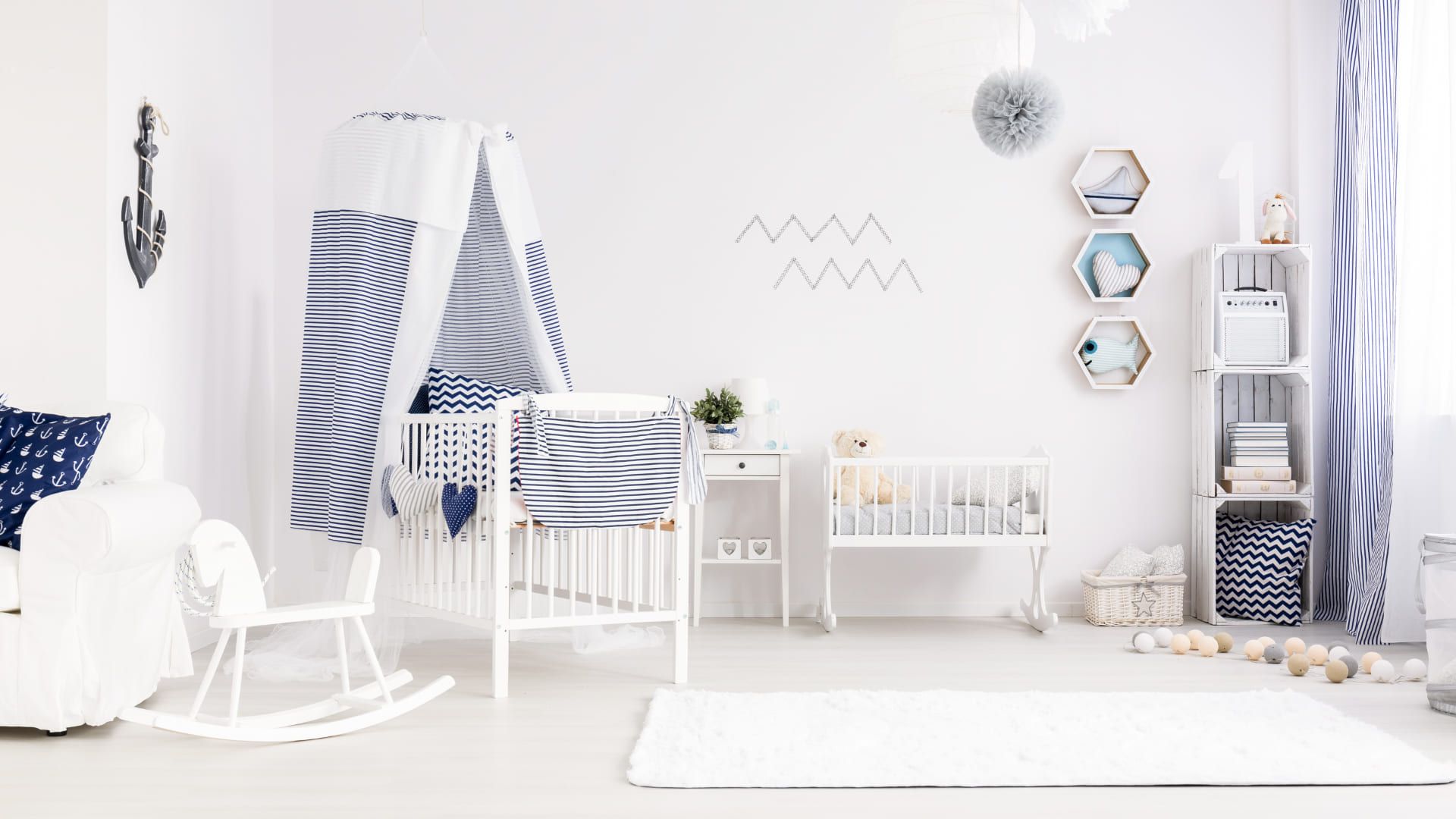Designing a Family-Friendly Room for Your Newborn

Sarah Johnson, MD

Firstly, congratulations are in order if your family is expanding! You discovered there are a ton of choices to consider before you bring your little new human home after telling your loved ones, adding every baby book under the sun to your Amazon cart, and feeling their first priceless heartbeat.
Since your baby's nursery will be among your first possessions as a new parent, designing it for them is an exciting and memorable experience. Every little thing counts because it's your way of expressing "welcome home" after you've welcomed them into the family. This guide will help you through every step of designing the ideal space for your little one, from selecting the color palette to deciding what furniture to include.
Selecting the Ideal Color Palette and Theme
The nursery theme and visual base should be created first. Have a long-term perspective before you start to get innovative. In a few years, are you going to paint the room again or move? If so, think about keeping it basic with a neutral foundation so you may adjust the theme as your child gets older.
Choose the narrative you want this space to convey if you want to go all in and establish roots for the foreseeable future. This is the space where your child will spend years eating, sleeping, and playing after all.
While themes related to nature or forests tend toward greens, beiges, and browns, themes related to space may signify colors of gray and blue. Gently hues never go out of style and can be both gender-neutral and modern. Using two or three base colors as a starting point, work your way up to any color scheme you choose.
better with Soula

Support for every woman:
✅ A Personalized Plan to reduce anxiety and overthinking
✅ 24/7 Emotional Support whenever you need it Cycle-Aligned Mental Health Tracking — monitor your mood and symptoms in sync with your period
✅ Real-Time Insights into your energy levels and emotional state
✅ Bite-Sized Exercises to help you return to a calm, balanced state — anytime, anywhere
Crib and Bedding
The way your baby sleeps is entirely up to you. Regardless of whether you choose a bassinet or crib, think about getting a firm mattress that fits comfortably. If you’re still choosing where your baby will sleep, the overview of the best bed for newborn may help you find an option that feels both safe and practical for your home. For the safety of the child, avoid using cushions, comforters, or stuffed animals in the crib at least initially. Instead, opt for fitted sheets while looking for bedding.
It's also advisable to hold off on utilizing any loose bedding until your child is more mature and capable of independent movement. Wearable blankets called sleep sacks are a popular choice among parents because they keep their infant warm without requiring extra bedding.
Changing Table and Storage
For many parents of little children, a changing table with lots of storage space is a need. If you decide to use a changing table, make sure it is stocked with all the essentials, such as body lotions, diaper creams, wipes, and diapers. To keep everything in one location and handy, you might also purchase a changing table with extra shelves or drawers to hold things like toys, clothes, and baby necessities.
As a first-time parent, you will quickly learn that organization is essential because babies have a lot of stuff. Organizers, boxes, and baskets are examples of storage solutions that can help you maintain diapers, wipes, and baby items close at hand.
Lighting
Select gentle and modifiable lighting fixtures, particularly in the event that this room will be used for late-night feedings and diaper changes. A stylish and useful way to create a relaxing atmosphere is with a dimmer switch or a soft, warm nursery lamp.
Temperature matters as much as lighting. Keeping the right balance helps your baby sleep better and feel secure. You can check what the best room temperature for newborn is to create a calm and cozy space.
Curtains or Blinds
To regulate how much natural light enters the room, install blackout curtains or shades. This is crucial for daytime naps and keeping your home conducive to sleep while your child adjusts to a regular sleep pattern.
By connecting the entire design together and giving the space the appearance of being deliberately arranged, curtains are also a terrific way to contribute to the theme or color of your home.
Wall Art
Even though utility is crucial, don't be scared to get some artwork for your infant's space. Select wall art that complements your theme and your baby's selected style. If you're feeling ambitious, you might try painting a mural wall yourself or adding some framed prints of quotes you want to repeat as a parent or your own favorite children's books.
Because they are so simple to apply and remove, peel-and-stick decals are incredibly popular for children's rooms because they make it easy to refresh the room's decor over time. Thus, these decals are a good option if you want a playful design but don't want to commit to a mural.
Stars, flowers, and ocean waves are some of the traditional design choices, but you can also find more complex decals like Winnie the Pooh or Peter Rabbit characters on Etsy.
If at times you feel anxious or uncertain as a new parent, an AI Mental Health can offer gentle support and help you find calm when everything feels new.
Baby Room Essential Items
Let's now discuss what is absolutely necessary to finish your baby's room. These accessories improve the nursery's usefulness while also promoting your baby's security and comfort:
- Baby monitor
- Glider or rocking chair
- Diaper pail or Diaper Genie
- Baby clothes and extra linens
- Baby books
- Toys
- Feeding supplies
Between nursery planning, feedings, and endless to-dos, it’s easy to forget about your own balance. Here’s a piece on work-life balance for women that might remind you to slow down and care for yourself, too.
Baby-Proofing
Make sure the space is baby-proof by covering all of the electrical outlets and fastening large furniture to the wall. Verify that nothing above their crib, such as picture frames or a mobile, could fall on them and harm them. You should take the necessary measures to re-proof your space for your child's height and activity as they get bigger and more mobile.
Consider coverings for acute corners when they are first learning to walk, soft, plush rugs for crawling, and safety latches on cupboards and drawers to keep young, inquisitive hands away from potentially dangerous objects.














